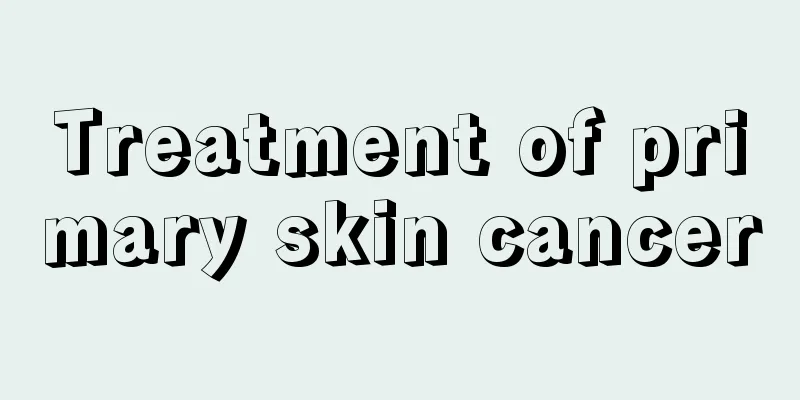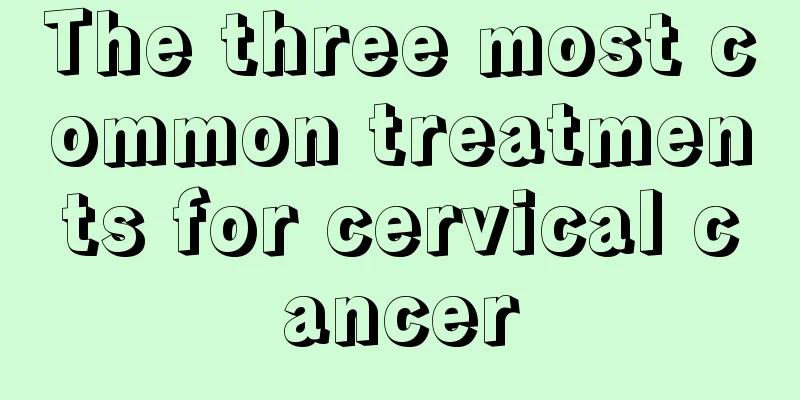Treatment of primary skin cancer

|
Treatment of primary skin cancer is as follows: (1) Surgical treatment: The ideal treatment method requires timely diagnosis, accurate estimation of the tumor range and invasion depth, and achieving satisfactory cosmetic and functional results while enabling the patient to return to the level of activity before treatment as soon as possible. Surgery can achieve this goal, and the greatest guarantee it provides is accurate diagnosis of the primary disease, satisfactory removal of the tumor, and the achievement of no recurrence. If the surgical incision can be closed initially, excisional biopsy is the most ideal method, and diagnosis and treatment can be obtained at the same time. If the tumor remains at the edge after the first excision, the excision needs to be expanded to ensure complete excision of the tumor and effective treatment. The activity of the skin around the lesion determines the maximum range of lesion excision and whether the incision can be closed initially. The greater the activity of the skin around the lesion, the safer the lesion can be excised. Larger lesions often require flap transfer or free skin grafting to close the wound. In addition, patients who relapse after radiotherapy or electrocautery, or because the tumor invades the bone or cartilage, often need surgical treatment. Pathological controlled excision, also known as Mohs surgery, is used for skin cancer that recurs repeatedly or has no other effective methods. The method is to cut a thin piece of tissue at the edge of the incision with a knife during the operation for frozen section, and check for cancerous tissue under a microscope. This surgery has a high cure rate. It has been reported that 170 lesions in 148 patients were treated with this procedure, and the cure rate can reach 97.1%. Recently, there have been reports of the use of Mohs surgery combined with sentinel lymph node excision in the treatment of high-risk cutaneous squamous cell carcinoma of the metastasis, hoping to further improve the cure rate of this type of tumor. (2) Radiotherapy: For primary skin cancer in the skin cancer area, if the tumor has not invaded the bone or cartilage and has not been treated with radiotherapy in the past, radiotherapy is often the most effective treatment method. Generally, squamous cell carcinoma is moderately sensitive to radiation, while basal cell carcinoma is sensitive to radiation and has a higher skin tolerance. Therefore, lesions occurring in exposed areas are prone to scar formation after surgical resection, which affects beauty and function. The elderly and frail people, and those with surgical contraindications (diabetes, kidney disease, heart disease, etc.) can all choose radiotherapy. However, lesions on scar tissue (burn scars), previous radiotherapy areas, poor blood supply, or tumors involving bones and cartilage, such as the scalp, fingers, nose, ears, etc., are not suitable for radiotherapy. The preferred radiation source is electron beam, followed by contact X-rays or shallow X-rays. The edge of the irradiation field should exceed the tumor by 0.5-1 cm. If the tumor boundary is unclear, the edge should be expanded by 3-4 cm. Vertical, tangential or multi-field irradiation is used according to the size of the tumor. The general tumor dose is 60-70GY/6-8 weeks, and the basal cell dose is slightly smaller. During treatment, the radiation field and dose should be adjusted according to the tumor shrinkage. If the tumor diameter is less than 1cm, X-ray contact treatment can be used, with a total of 60-70GY, 20-30GY each time, 3 days apart, for a total of 2-3 times, and care should be taken to protect the surrounding tissues. (3) Chemosurgery: Mohs pioneered the chemosurgery technique. The method is to apply zinc oxide paste to the tumor. After the tumor is completely fixed, the fixed part is removed, frozen sections are examined, and the remaining part of the tumor is marked. Then the zinc oxide paste is repeatedly applied. This process of fixation with zinc oxide and frozen sections is repeated until the tumor is completely removed. For small primary lesions, the cure rate of chemosurgery is basically the same as that of surgical resection, radiotherapy, and electrosurgery. Chemosurgery is an ideal treatment for cases with extensive recurrence after combined surgery and radiotherapy. |
<<: What are the late-stage symptoms of lymphoma?
>>: Pathological characteristics of skin cancer
Recommend
Which hospital is better for treating fibroids
Which hospital is better for treating fibroids? C...
Quick fruit cutting knife
Fruits are different from vegetables. Fruits are ...
What to eat if you have cervical cancer
Early cervical cancer has little effect on digest...
What is the principle of moxibustion on the face to remove spots
Facial spots will not only affect one's perso...
How to judge whether the liver is healthy
In fact, many physical manifestations are closely...
The secrets your eye doctor won't tell you
Core Tip: Do you only wear sunglasses when the su...
What kind of food is wonton
I believe everyone is familiar with the word wont...
Early symptoms of lung cancer brain metastasis
Early symptoms of lung cancer brain metastasis: E...
The function of air humidifier
In the current furniture market, humidifiers have...
At what age is nasopharyngeal cancer more likely to occur? What should we pay attention to?
At what age does nasopharyngeal cancer occur? Wha...
The effects of ginseng and red ginseng and the difference between the two
Ginseng is rich in nutritional value and has the ...
How to treat thick white tongue coating and bad breath, why does this phenomenon occur?
Thick white tongue coating and bad breath are ver...
Symptoms of allergic eczema
Human beings are said to be very powerful individ...
What does metabolism mean? Do you understand?
Metabolism is the general term for all orderly ch...
How many days do you usually take anti-inflammatory injections during menstruation
Gynecological inflammation is a gynecological dis...









